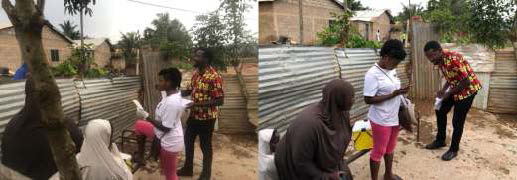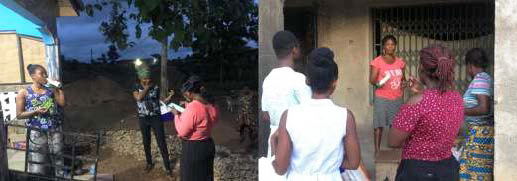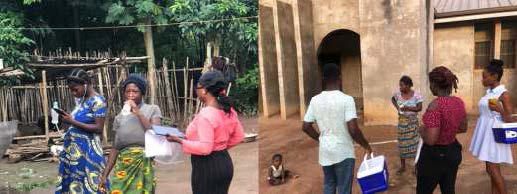
GC FERMENTED FOOD
ProjectResearch Program
Cereal, Grains and Legume Products Program
Duration
18 Months
Funding Source
Bill and Melinda Gates Foundation
Collaborating Institutions
UHAS, UG
Project Acronym
GC FERMENTED FOOD
GC FERMENTED FOOD - FERMENTED SOYMILK-BURKINA IN GHANA. EFFECT OF SOYMILK-BRUKINA INTAKE ON GUT MICROBIOME AND NUTRITIONAL STATUS OF GHANAIAN WOMEN.
The GC fermented project aimed at investigating the impact of the intake of soymilkbrukina, a novel Ghanaian indigenous fermented milk and millet beverage (smoothie), on the gut microbiome and nutritional status of women of reproductive age (15-49 years) living in the Hohoe Municipality in the Volta region. This project replaced cowmilk, which is one of the main ingredients in “brukina smoothie” with a plant protein. Soymilk offers a healthful nutritional profile, including flavonoids that exert antioxidant, anti-inflammatory, and cardioprotective properties. Soymilk substitution will therefore enhance the nutritional and health benefits of brukina. Besides its lower environmental impact compared to livestock rearing for milk, the used of soymilk in brukina production will ultimately boost the soybean market, which is being currently vigorously promoted, to enhance livelihood of local farmers in Ghana.
Introduction
In recent times, consumers are expressing a clear demand for healthier and more sustainable food. Embracing the tradition of microbial fermentation to transform locally available foods into naturally vitamin-fortified, toxin-free, flavorful, and shelf-stable product could empower local communities to mitigate the impact of COVID-19 on supply chain/food security and improve health and nutrition of mothers and children in most vulnerable settings. Historical advances in food processing have largely employed strategies that involve supplementation with micronutrients and additives to improve nutritional content and stability, but these approaches require highly centralized supply chains.
Food fermentation plays a key role in the diet of numerous communities in the world especially in Sub-Saharan Africa (SSA) where most of the populace still live in an environment that resembles that of Neolithic settlement. It is an ancient practice through which locally-sourced food substances can be transformed naturally by environmentally occurring microbes. These processes are thought to be intricately intertwined with human biology, and it is hypothesized that our primate ancestors adapted to natural fermentation processes millions of years ago. While many fermented foods (e.g., yogurt, cheese, coffee and alcohol) remain popular, certain types of fermentation are a dwindling art in many settings, representing a loss of cultural heritage and a natural way to improve the qualities of foods across several distinct axes. However, beyond many of the well-known examples of microbial fermentation, the vast majority of fermentation processes around the world remain uncharacterized and their potential human health benefits are unknown. These ancient practices may hold the key to impactful and locally targeted nutritional interventions that combine tradition and science to tackle malnutrition.
Key Activities and Achievements:
The GC-Fermented food project was divided into four (4) phases. The first phase of the project tackled soymilk brukina fermentation and standardization, which encompassed activities such as product fermentation and standardization included activities such as: soymilk production, soy yoghurt production, production of steamed ground millet, sensory evaluation of soymilk brukina, laboratory examination and consumer acceptability of soymilk brukina.
Soymilk -Brukina Fermentation and Standardization
GC fermented food project started with development and standardization of the fermented and unfermented drink for student participants. One hundred percent soymilk-brukina was formulated at 3 levels of steamed millet agglomerate and fermented soymilk with constant Brix. Various formulations were assessed in-house for sensory attributes (taste, colour, flavour, aftertaste) and overall acceptability on a 9-point Hedonic scale by semi-trained adult panelists. After the establishment and standardization phase at CSIR-Food Research Institute, production of soymilk-brukina began for the study in Hohoe Municipality. The production of soymilk-brukina is in four stages. The first stage is the production of the soymilk. The second stage is using the soymilk produced to make yogurt. The third stage is the production of the steamed ground millet. The fourth stage is the combination of the steamed ground millet and the yogurt into a single product (Soymilk-brukina).
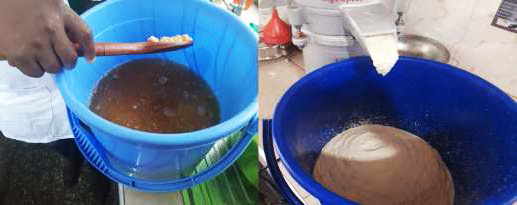
Steeping and mashing of soymilk for soymilk-brukina drink

Preparation of soy yogurt for Soymilk-brukina.
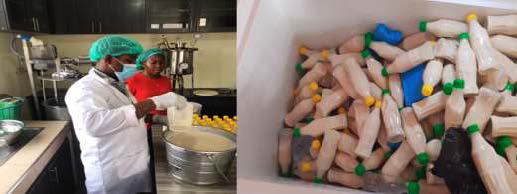
Bottling soymilk-brukina drink with millet flakes.
Project Team






More Projects
Let's Talk!
Want to Do Business With Us? Connect with us and let's set the ball rolling. Our experienced professionals are eager to help your business thrive.

